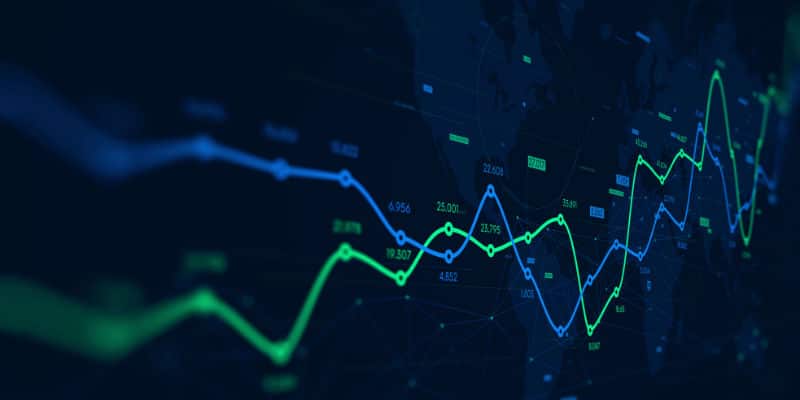In 2018 Apple became the world’s first trillion-dollar company. Had the executives at Hewlett-Packard not made a critical mistake a few decades earlier, that title might have belonged to them.
It’s well known that Steve Jobs and Steve Wozniak founded Apple in a tiny garage in Los Altos, California. However, what many people don’t know is that when Wozniak designed the first prototype of the Apple I personal computer, he wasn’t working for Apple, but for HP. In fact, Wozniak proposed the idea for the Apple I to executives at HP and was rejected not once, not twice, but five separate times.
As painful as it must be for the executives at HP to look back on the episode with Wozniak, their experience isn’t an anomaly. In fact, history is full of examples of companies that overlooked or even rejected what turned out to be lucrative business ventures. Just look at how Blockbuster passed on an opportunity to buy Netflix in 2000, how AT&T decided it wasn’t worth investing in personal cellphones in the early 1980s, or how telecommunications executives laughed at Mo Ibrahim in the late 1990s when he proposed building a cellular network in Africa. The list goes on.
“You win some and you lose some,” HP cofounder Bill Hewlett later remarked about the company’s missed opportunity with the personal computer. But were HP’s executives simply unlucky? Or did something actually prevent them from seeing the opportunity in front of them, causing them to repeatedly pass on the idea?
Data myopia
The answer boils down to how HP (and others like it) made decisions. In HP’s case, executives noted that computers were mostly being used by businesses and universities. From their perspective, it simply didn’t make sense to manufacture and sell personal computers when, up to that point, the data showed no trends suggesting that people would use computers in their homes. That circumstances might change in the future didn’t seem to occur to them. HP’s executives had a kind of data myopia.
Jobs and Wozniak, however, saw things differently. They had a hunch that the reason that people hadn’t transitioned to using computers in their homes was not that they had no use for them in their personal lives, but because the bulky, complex computers of the era weren’t simple and affordable enough for the average person to use at home. We call this nonconsumption—when people go without a product or service from which they would otherwise benefit because conventional options are too expensive and complicated.
There wasn’t any hard data to back up just how many new consumers would exist in this new market for personal computers, making the investment seem risky. No one could look into the future and see that by 2016, nine in ten American households would own at least one computer. But because Jobs and Wozniak didn’t limit themselves by viewing the world exclusively through the lens of data, they were able to see the tremendous opportunity where HP’s executives could not. They sensed that a relatively cheap, easy-to-use personal computer could change the game in the computing industry.
Looking beyond the data
So how do companies—and countries looking to strengthen their economies through smart investments—avoid the same mistakes that led HP and others to miss opportunities in the past? It starts with asking questions that go beyond what data can answer. Is there a product or service that people don’t currently use because they lack the money, time, skill, or access to do so? How can I transform a product that’s complicated and expensive into one that’s simple and affordable enough for the average person to use? Questions like these, which help identify nonconsumption, offer one of the clearest avenues toward new growth—and prosperity.
It was this mentality that set apart Apple from HP, laying the groundwork for its tremendous growth and success. But that success wasn’t limited to the company’s financial statements. In its efforts to sell computers to a new population of consumers, Apple had to hire people to design, manufacture, market, advertise, and sell its products, creating hundreds of thousands of jobs that didn’t exist before. It also unleashed a wave of productivity among its customers, who could leverage personal computers to do more work more quickly than before. Altogether, these contributions have made Apple a key engine of economic growth not just for the company’s executives, but for the United States’ economy as a whole. In fact, this pattern extends beyond Apple and the United States; in our research, we’ve found that companies that target nonconsumption have been pivotal drivers of prosperity throughout history and across the globe.
As the Apples of tomorrow look to make their mark on the world, they must remember that data, while certainly informative and worthy of attention, has a major limitation: it’s old. Even at its best, data can only illustrate trends from the past, which are vulnerable to changes in future circumstances. Consider the World Bank, one of the most reliable sources of global economic data that company executives and government leaders might look to when assessing potential markets. It’s still gathering information on global economies from 2018, meaning much of its most up-to-date information is from 2017. That’s fine if you’re just interested in what a country’s economy looks like or how it has changed over time, but it gives an incomplete picture of future chances for growth.
Data is useful for many purposes, but judging opportunity usually is not one of them.



